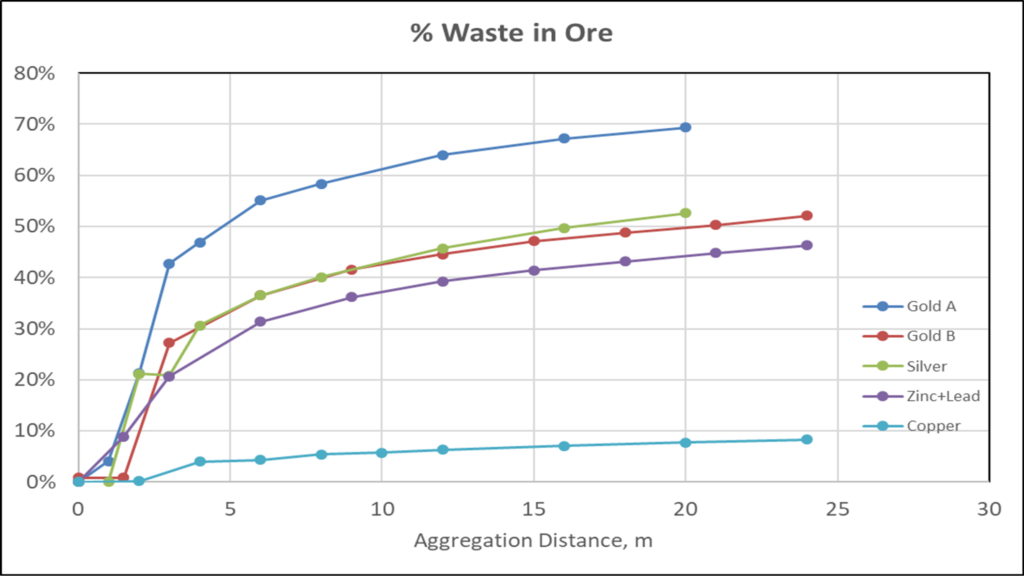SRK’s stepwise approach to pre-concentration analysis
Having outlined a new vendor-agnostic, lab-based “pre concentration screening test” for mining in part one of this three-part series, SRK is back for part two, discussing the wider pre-concentration evaluation process that this testing fits into
“With any pre-concentration analysis, we need to, first, understand the heterogeneity of the deposit; simply put, if you don’t have heterogeneity, you don’t have the ability to separate the good stuff from the bad stuff and carry out pre-concentration,” Bob McCarthy, Principal Consultant, SRK Consulting (Canada) Inc, says.
With this baseline in mind, SRK Consulting has devised a pathway for companies with drill core at their disposal to analyse whether pre-concentration is a viable option for their flowsheet.
Made up of five steps, this staged approach is deliberately designed to allow companies to pause at the end of each phase to re-evaluate if there is a strong enough case to continue investing the time and finances required.
The heterogeneity analysis is first up, which, under SRK’s evaluation, includes two different approaches based off drill hole analysis: Heterogeneity and Scale and Composite-Sample Relationship Analysis.
“Heterogeneity and Scale involves a process of looking up and down the bore hole at different aggregation distances from every sample and interrogating the sample grade – or net smelter return – against the aggregations above and below that individual sample,” he explains. “We then increase the size of the aggregation to see how that relationship changes.”
Such analysis enables SRK experts to derive the heterogeneity measures typically dubbed ‘waste in ore’ (mineralisation below the cutoff grade within an above cutoff grade zone) or ‘ore in waste’ (mineralisation above the cutoff grade within a waste or marginally below cutoff grade zone). Using a cutoff grade derived from industry benchmarking, the consultants assess the aggregation distance, as resolved in the vertical direction, with the “selective mining unit” (SMU), which typically relates to equipment sizing for mining.

“The pitfall some companies go down is picking your SMU to match an equipment size and production rate typically aligned to a corporate or strategic objective,” McCarthy says. “This could mean generating a 12-14-year mine life for a gold operation, or some other investor-led metric that doesn’t necessarily respect the deposit’s heterogeneity.”
The second approach – Composite-Sample Relationship Analysis – allows consultants to further quantitatively assess those waste in ore/ore in waste heterogeneity measures.
“Those parameters have multiple uses after being determined,” McCarthy says. “For example, they help guide in the sample selection – you can even visualise them in 3D with something like Leapfrog. You can also see contiguous lengths of above or below cutoff grade material in ore zones or marginal waste zones, representing what an ore sorter may see. These would be targeted for testing.”
Responding to industry calls, SRK now offers a step between this fundamental heterogeneity analysis and the test work it can conduct at Base Metallurgical Labs’ Kamloops facility in British Columbia, with what McCarthy calls “size the prize” economics. It provides insight into possible pre-concentration strategy outcomes and, just as important, justification to continue to the next step of lab test work.
This process – carried out by SRK on several projects in the past – is designed to allow the mining company and consultant to test pre-concentration strategies from an economic perspective, assessing if an operation should be removing waste from ore or looking to recover above cut-off grade material from “marginal waste”.
McCarthy added: “It is about answering these questions: is it best to remove waste from mill feed, and to what maximum grade of feed, or to extract mineralised material from marginal, below cut-off grade material that increases the mineral reserve? And, of course, do the expected results of this process look promising?”
Gold is a good example here as the economic case study for pre-concentration often only stacks up when a “cap” is applied to the grade of ore subjected to pre-concentration. In other words, the highest-grade material should not be targeted. Even high-efficiency pre-concentration methods incur some metal loss, and any amount of “loss” that occurs in a gold project is…
Read More: SRK’s stepwise approach to pre-concentration analysis

